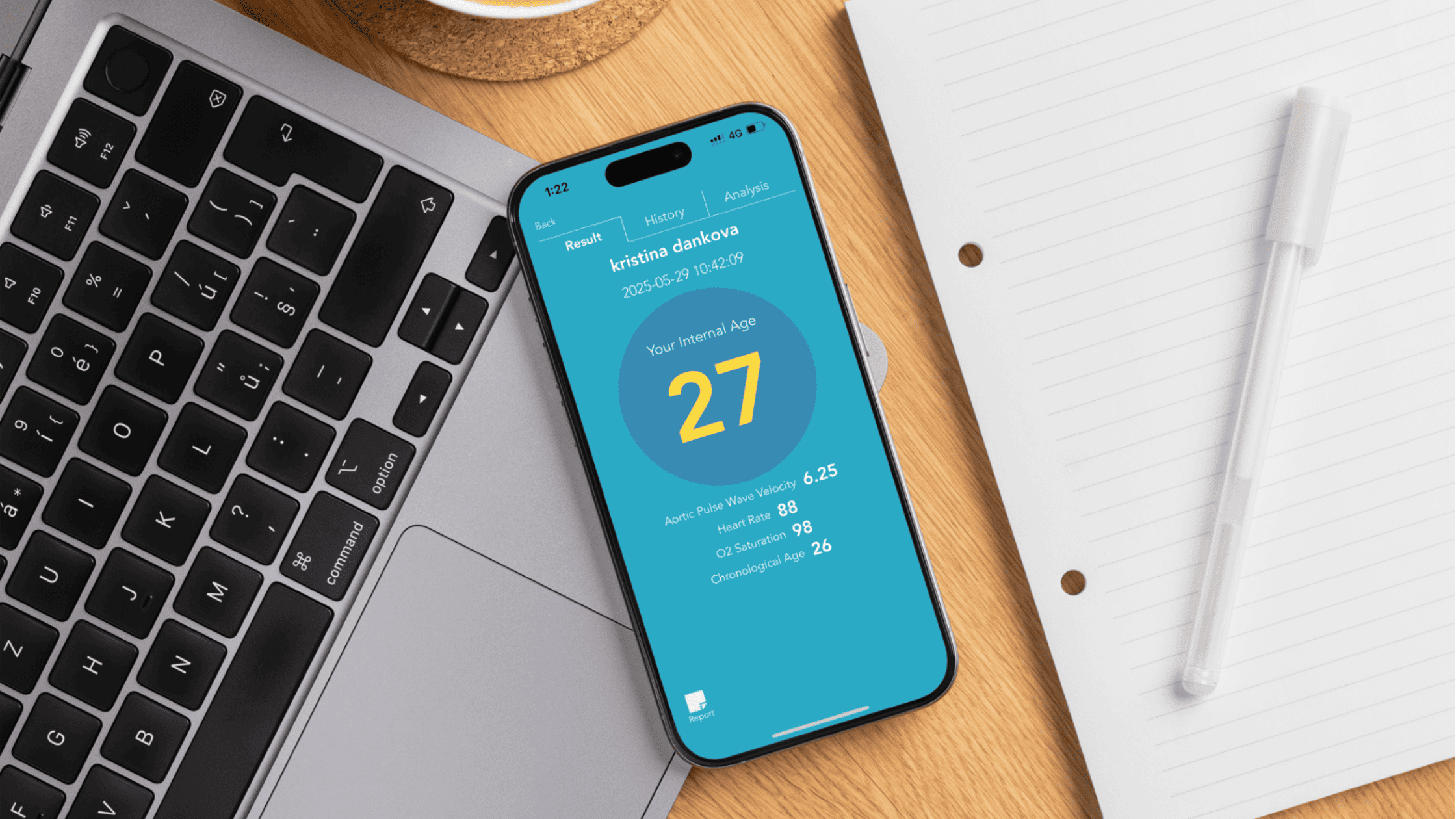Does it matter which finger/hand I use in the iheart® device?
We recommend that you use your index or middle finger. This can be on either hand. Cold hands or poor circulation may affect your reading but this can usually be overcome by rubbing them together and clenching/releasing your fist a few times to stimulate blood flow.

How can I get the most out of my iheart® device?
There are a few things to keep in mind when taking an iheart reading to maximize results and your understanding of them:
-
Rest for 2 minutes before testing.
-
Rest your arm on a flat surface such as a table or your leg throughout the test.
-
Take a reading at the start of each day to establish a Baseline. This is the number that you want to see change over time as it is reflective of your overall health.
-
Non-baseline tests taken throughout the day will vary due to common fluctuations in blood pressure. By observing trends in your iheart results you’ll develop a responsive understanding of your internal health. Readings are affected by exercise, stress, and other factors, and tests taken throughout the day can be useful for recognizing short term effects of stress and other lifestyle choices.
Factors that will affect readings:
Movement and speaking during the test will cause inconsistent readings. Over time you’ll be able to recognize when a reading has been compromised as there’ll be spikes in the usually-consistent pulse shape.
Food and drink will affect readings just as they affect blood pressure. It is for this reason that we suggest taking a baseline reading in the morning before having anything to eat or drink.
Coffee and caffeinated teas have negative effects on iheart readings, both in the short term and long term. One can expect to receive a higher-than-usual Internal Age reading if caffeine has recently been consumed.
An irregular heartbeat will have an effect on iheart readings. You’ll be able to see if your heart is beating irregularly on the recording screen’s pulse wave display. A regular heartbeat will have consistent spacing between each pulse wave. If the spaces are inconsistently spaced, the heartbeat is irregular. If your heartbeat is irregular for the majority of the 30-second test then iheart will not be able to produce an Internal Age result. After two unsuccessful readings iheart offers you the choice to ‘Save Pulse Wave Analysis Anyway’. It may be advisable to review this test with your doctor.

Why does my Internal Age vary so much sometimes?
Your body is very dynamic and you will see variations in Internal Age in response to exercise, eating, stress, and myriad other factors. These variations are normal. Blood pressure, heart rate, and other physiological parameters change from moment to moment in a similar fashion and affect your Internal Age readings. Refer to ‘How can I get the most out of my iheart device?’ section of this FAQ for a better understanding of how these variations can be interpreted positively.
How can can I make my readings more consistent?
iheart provides extremely accurate real-time testing. Our results aim to give you a transparent look into how your body is performing on a moment-to-moment basis. We recommend establishing a baseline to track overall health improvement over time. Test at the same time of day every day. Or, test at consistent times multiple times a day (first thing in the morning, after exercise, or after work). You can use the notes section within our apps to add context to your results so that you can build a better understanding of your internal health over time.
How can I positively affect my iheart® recordings?
Beneficial influences include:
-
Increased daily movement
-
Increased daily laughter
-
Healthy dietary choices, including consuming foods with Omega-3 fatty acids
-
Not smoking
-
Consistent and adequate hydration with clean water and/or green tea
-
Quiet relaxation
-
Peaceful meditation
-
Supportive social relationships
What will negatively affect my iheart® recordings?
Detrimental influences include:
-
Too little daily activity
-
Not enough laughter in your life
-
Poor dietary choices, including over-indulgence of processed foods, refined flours and sugars, unhealthy fats, and alcohol
-
Smoking
-
Consistent inadequate hydration
-
Recurring and unresolved stress
-
Few nurturing relationships
What does the red dot on my iheart® Internal Age results mean?
The red dot on the pulse shape at the top left of your iheart Internal Age results screen signifies the beginning of the Aortic Reflected Wave. Please refer to our blog post, ‘Aortic Pulse Wave Velocity (AoPWV) vs. Pulse Wave Velocity (PWV)’ for a more in-depth look at the Aortic Reflected Wave.






Share:
Troubleshooting
Your iheart Device